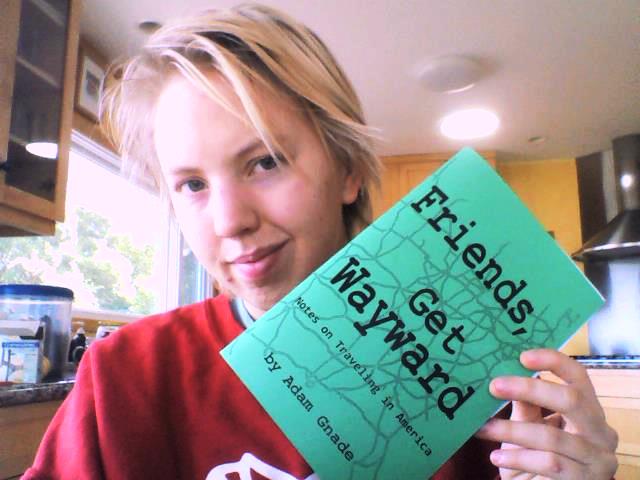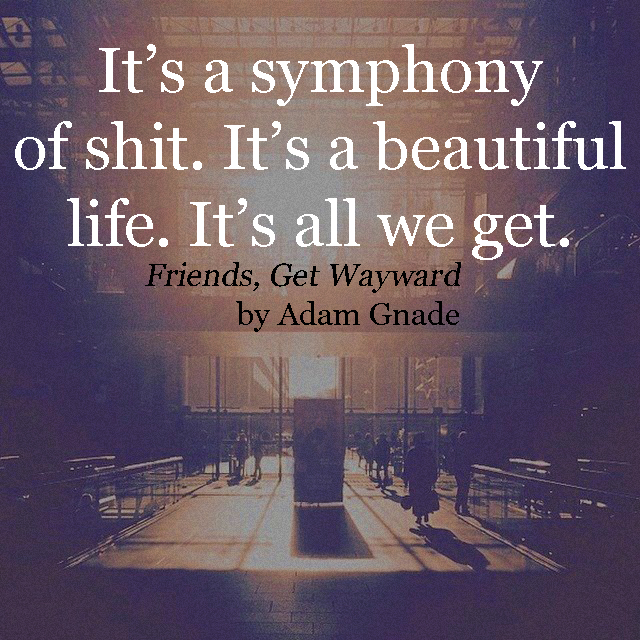My boyfriend and I recently got back from a road-trip through the Pacific Northwest. My favorite place that we went on the trip was Portland Button Works, which is a zine distro as well as a button-making business. I had never seen so many zines in one room! It was thrilling! The shop is run by Alex Wrekk, author of the perzine Brainscan and the book Stolen Sharpie Revolution, an introductory guide to zine-making.
Serendipitously, the day before I visited Portland Button Works, I got an email from Alex’s publicist asking if I wanted to review the new edition of SSR on my blog. I picked up my review copy in person, which was cool! Meeting Alex had me a bit starstruck, because she’s such a renowned underground author, second only to Aaron Cometbus or Cindy Crabb in terms of longevity and recognition. She also bravely exposed Joe Biel of Microcosm Publishing as an abuser and manipulator. (You can read about that online if you’re interested in the ethics of your reading material—which you should be.)

Stolen Sharpie Revolution is the perfect gift for a weird, moody teenager, or even a kid in middle school. Beyond the practical how-to stuff about page layout and wrangling photocopiers, what’s important is the emphasis on taking control of your own story. Alex writes, “We all have stories to tell and no one is going to tell them for us.” The next step, after figuring out how to tell your story, is to publish it. Zines are an under-utilized way of sharing your words with the world.
I have to go off on a quick tangent here. As a beginning writer, it’s tempting to throw your hands up and say, “What’s the point? Everything has already been written, right?” To an extent that’s true, because the basic human conflicts and emotions haven’t changed since Homer recited the adventures of Odysseus. But every generation has to write the stories again. A young voice can make an old story accessible to new ears. Human stories deal with ancient themes, ancient archetypes and problems, but the language and the social mores are changing constantly. Don’t worry that it’s all been done before. It hasn’t been done by you, in the here and now.
Aesthetically, Stolen Sharpie Revolution is like a traditional cut-and-paste zine, done with a typewriter, scissors, and glue. It’s a great introduction to zine culture, and the only thing that I think it lacks is a section on desktop publishing using computers. However, that would also be vastly complicated to include, since not everyone has Microsoft Office or even the basic technical skills needed to format a zine using a word processor.
The review on Books and Bowel Movements kind of peeved me off, because Cassandra implied that Alex wrote her book like it was THE ONLY, MOST DEFINITIVE guide to making zines. In fact, Alex explicitly says that she’s just sharing what works for her. Stolen Sharpie Revolution should be seen as a window into what some zinesters do, and a starting point for learning more.
Speaking of learning more, I asked Alex a couple of questions, basically just because I could. Flora’s Forum did a more in-depth interview. Anyway, here’s my dialogue with Alex:
Sonya: How do you deal with “activist burnout”? I ask because this is something that I wrestle with, feeling hopeless and exhausted by the hugeness of the bad parts of life, and I would appreciate counsel from someone who’s held onto punk/anarchist/DIY ethics for a long time.
Alex: I have a couple of strategies but I’m not exactly sure they work for everyone. The main one is to let others do the heavy lifting sometimes. You can’t take on everyone and everything if you don’t have some space and time for yourself, so be good to yourself.
I also like to look at things in small chunks to avoid the hopelessness of drowning in the big picture. What can you do to make your house better? Your neighborhood? Your community? Recently I became a member of the advisory board of my credit union. I knew nothing about what I was doing there but I was putting myself in a new space and learning new things, like the actual difference between banks and credit unions. I was about to apply this new info to my personal feelings about capitalism.
Be an ambassador for your ideas in places you didn’t know you could. When I first moved to Portland I worked at an arcade. After after a few months my boss said, “You’ve made me punk friendly!” and offered to give me May Day off and the next day “just in case you get arrested”. Also, you can drop out sometimes and come back to your work later. Knowing AND expressing your boundaries in activism is really important. I don’t feel like I do as much as I used to, but that’s okay. I needed to learn to be okay with that. I’ve built relationships and communities where I am comfortable but also where there is room for growth.
Sonya: Near the beginning of Stolen Sharpie Revolution, you explain that we all have the opportunity to tell our own stories. Do you remember when you realized this, personally? Have you always been a writer?
Alex: I don’t think I ever really consciously thought about it until 2003 or 2004 when there was a camper I had taught at the Rock ‘n’ Roll Camp For Girls who was interviewed afterwards and said something like, “In the zine class we learned that we can tell our own stories because we can’t expect other people to tell it for us,” and I was like, “Wait, I said that in that class? I did say that!” To me, there wasn’t really a barrier there, it was just something I knew. I joke that I’m “DIY by Default”. I’m always looking at stuff and going, “How can I make that?” I think I got that from my mom. Getting involved in punk when I was 15 in the early ’90s was a vehicle for that. Once I found zines I thought, “I can make these too!” And it gave me something to do with all the notebooks lying around with ideas and lists in them. I don’t think I’ve always been a writer, but I do think I’ve always been a storyteller.




